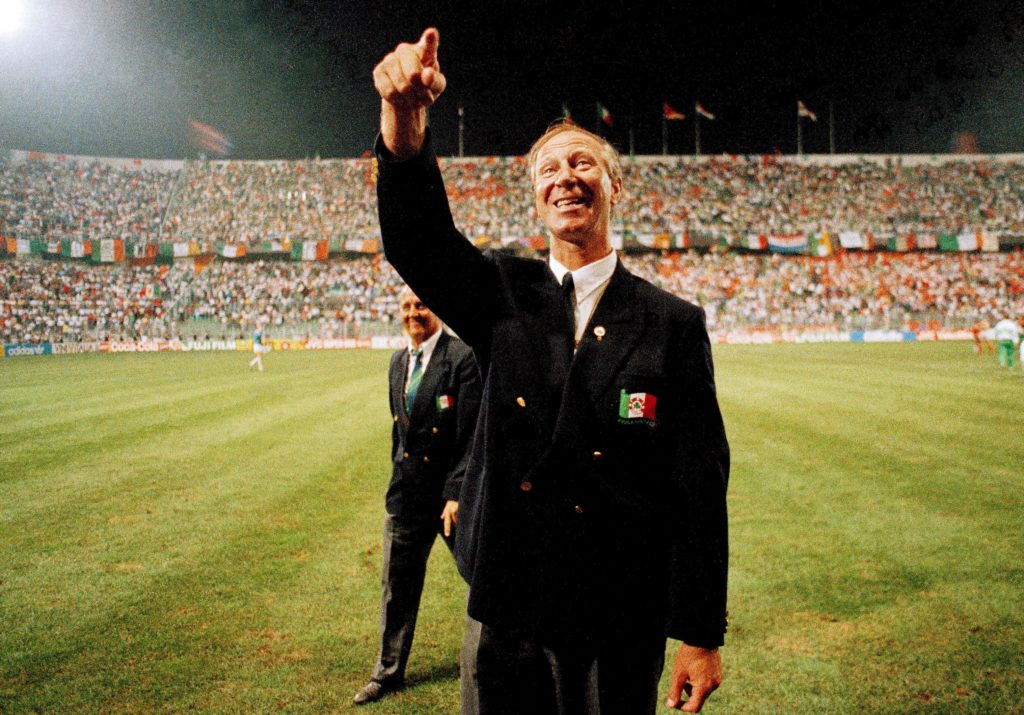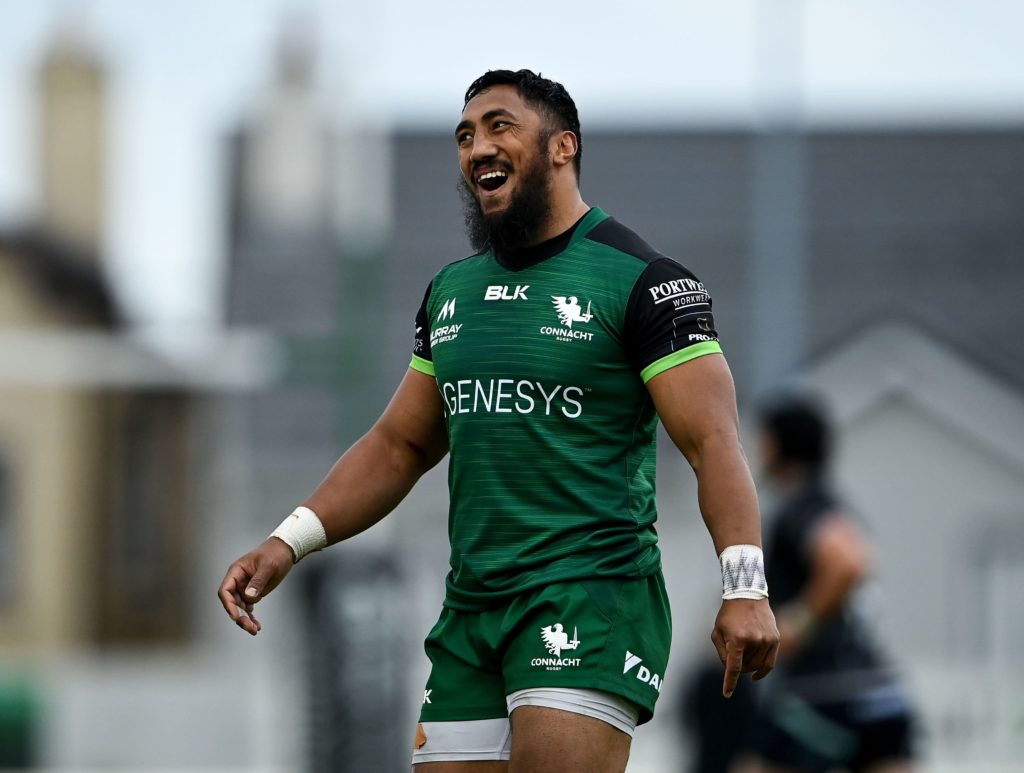Nobody ever went broke trading in nostalgia, a fact someone in Ireland realised long ago.
This is, after all, a country where the state broadcasters produce a popular television show called ‘Reeling in the Years’ with the basic premise that every single year of every single decade is worth a sepia-tinged lookback. Did something happen? Doesn’t matter…did anything happen? Roll the clips.
But if longing for a time long passed is not a new phenomenon, it’s one that reached its zenith over the last 15 months of lockdowns.
With the future uncertain and the present flitting between frightening and a tortuous ‘Groundhog Day’, there was a comfort to be found in casting the mind back to a time when you could leave the house for little reason other than you felt like it.
Repeats of the 2009 British and Irish Lions’ tour to South Africa offered one notable exception – if this summer’s iteration is half as intense then fans will consider themselves spoiled by the fare
For the Irish sports fan during the summer of 2020, when rugby, soccer, Gaelic football and hurling stadiums from the island’s tip to toe were all still shuttered, this notion manifested itself in what television marketers like to call “classics.”
The only problem arose when, with a sobering shudder of realisation, it turned out these classics weren’t really worthy of the moniker at all, the memories of these halcyon days when the grass was greener, the sky was bluer and the jerseys were baggier having clouded the fact that top-level, professional sport has evolved at such a rapid rate that games from even two decades ago can seem plodding and clunky by comparison.
Repeats of the 2009 British and Irish Lions’ tour to South Africa offered one notable exception – if this summer’s iteration is half as intense then fans will consider themselves spoiled by the fare – but perhaps the event that felt most enhanced by distance, the one that felt amplified rather than diminished in the re-telling, was the Ireland football team’s journey to Italia ’90.
Even in the height of a packed sporting summer, the 30-year anniversary of the Boys in Green’s first World Cup would have been marked. In the great void, though, it offered a reminder of the unique power of what was absent.

With the tournament uniquely pitched between the grim recessions of the 1980s and the unseemly excesses of the ‘Celtic Tiger’ boom, writing in The Irish Times last year Keith Duggan described a second-round penalty shoot-out victory over Romania as “Ireland’s Walt Whitman moment.”
A rekindling of national pride, the Irish exploits in Italy have even been credited with reclaiming the tricolour flag that had come to be associated by many with the then ongoing sectarian conflict known colloquially as ‘The Troubles.’
In the midst of all the reflections, further poignancy was added by last summer’s passing of the team’s beloved manager, Jack Charlton, who had suffered with dementia.
His younger brother, and fellow 1966 World Cup winner, Bobby, may be a knight or the realm, but Big Jack carries no less a title than Ireland’s patron saint of international football. And just like St. Patrick himself, he’d no connection to Ireland before duty brought him to these shores.
CJ Stander will soon pull on the red of his beloved Munster for a final time, ending his career and a nine-year association with Irish rugby. Here endeth the playing days of Ireland’s finest ever ‘project player.’
It would be disingenuous to claim it never mattered that Charlton was as English as fish and chips – “Go home Union Jack” read one banner at Lansdowne Road early in his tenure – but his status as the mastermind behind Ireland’s most popular sporting team of any code soon meant his upbringing could as well have come in Newry, Navan or New Ross and not Northumberland.
Some three decades on from Nessun Dorma, David O’Leary and Packie Bonner, and for all the understanding of the plurality of identity embraced during the interim, some rugby stars are finding they are still not to be afforded the same courtesy.
Sometime during the concluding weeks of the Rainbow Cup, CJ Stander will pull on the red of his beloved Munster for a final time, ending his career and a nine-year association with Irish rugby. Here endeth the playing days of Ireland’s finest ever ‘project player.’

Virtually from the moment Stander shocked team-mates by announcing his decision during the final week of the Six Nations – such status has assumed the feel of a back-handed compliment.
The man born in South Africa’s Western Cape was not the first of the genre – players like Andy Ward were representing Ireland via residency in the late 1990s before the term ‘project player’ was ever coined. Nor will he be the last. Bundee Aki will soon follow in the footsteps of Stander and Jared Payne as he goes from playing international rugby thanks to residency to representing the British and Irish Lions, while James Lowe was training with Andy Farrell’s Ireland panel even before meeting the 36-month threshold last autumn.
But by virtue of being the most prominent and most frequently capped, Stander’s retirement and return home this summer to be with family has once again fanned the flames of Irish Rugby’s complicated debate over the residency rule and who is, or isn’t, entitled to represent the national side.
There is, of course, no fault to be found with the many who argue that a 36-month stint with one of the four provinces isn’t a sufficiently long commitment to earn a green jersey. Given that World Rugby’s Regulation 8 has already been extended from three to five years, a time-frame that essentially renders the targeting of senior players redundant, those in power have already shown they agree.
Stander’s retirement and return home this summer to be with family has once again fanned the flames of Irish Rugby’s complicated debate over the residency rule and who is, or isn’t, entitled to represent the national side.
To use Stander’s retirement to dredge up an already settled debate anew has the feel of giving someone a kick in the behind rather than a pat on the back as he walks out the door. As well as that, it continues the curious practice of directing ire at a symptom rather than cause.
The Munsterman has spoken in the past about the online abuse sent to players and, in the aftermath of Ireland’s 2019 World Cup failure, their families.
“I do speak to other guys,” Stander said before last year’s Six Nations when asked if he felt ‘project players’ were held to a different standard than their native counterparts.
“And didn’t Bundee get a lot of slack as well? It’s something that we take in and then when guys perform on the pitch like Bundee did at the weekend, you look at it again and just laugh about it on a Sunday morning.”
Stander, Aki, Quinn Roux, who will also depart this summer after 16 caps over five seasons, and perhaps most viscerally Jean Kleyn have all been victims of the same misdirected arrows that attack the person and not the policy.

The latter’s selection for the World Cup ahead of long-serving Devin Toner in 2019 even brought online criticism from then World Rugby Vice Chairman Agustin Pichot.
There is something perplexing about a nation that celebrates its far-reaching diaspora to such a degree that President Barack Obama has a service station in County Offaly named in his honour by virtue of an ancestor who emigrated from the area more than 150 years ago but apparently feels so little affinity to those who have chosen to build their lives and raise their children here in the present day.
One can only imagine what the sight of such online abuse sparks in the minds of those outside the sport who are part of a supposedly new and culturally diverse Ireland where recent estimates suppose that more than half a million of the population were born beyond the shores of the island.
If anything, the likes of Stander, Aki and Lowe have made the Irish Rugby team far more reflective of the cities, towns and villages that make up the 32 counties under the IRFU umbrella than would otherwise be the case.
There is something perplexing about a nation that celebrates its far-reaching diaspora to such a degree that President Barack Obama has a service station in County Offaly named in his honour by virtue of an ancestor who emigrated from the area more than 150 years ago but apparently feels so little affinity to those who have chosen to build their lives and raise their children here in the present day.
In a more micro and purely sporting sense, an unintended consequence of World Rugby’s shifting standard seems sure to be an increasing effort to target those players already qualified for Ireland through ancestry – ‘the granny rule’ so popularised in soccer during the time of Charlton.
As the familiar commentary around the likes of Rob Herring, Billy Burns and, another imminent retiree, Michael Bent has shown of late, the most vociferous critics of ‘project players’ often don’t make the distinction between those with no previous connection to Ireland and those eligible to be capped on arrival thanks to potentially distant relatives.
Only recently David Nucifora, who has served as the IRFU’s high performance director since 2014, confirmed the union would continue to cast the net far and wide. The Australian, who is responsible for making the often unpopular decisions to ensure emerging youngsters aren’t blocked by more established imports, has clearly already switched focus when it comes to the market where more and more such players have been targeted since the change to regulations became known.
“We’re going to continue to grow that arm of the IRFU in the coming years,” he said in an end-of-season briefing.
“There are many other players who have come through and there will continue to be more, players not just from the UK but other parts of the world as well that will feature.”
Whatever the future does hold, reaction to Stander’s departure has shown that for many the debate surrounding project players is not one that will die out with the three-year rule.
More stories from Jonathan Bradley
If you’ve enjoyed this article, please share it with friends or on social media. We rely solely on new subscribers to fund high-quality journalism and appreciate you sharing this so we can continue to grow, produce more quality content and support our writers.



Comments
Join free and tell us what you really think!
Sign up for free